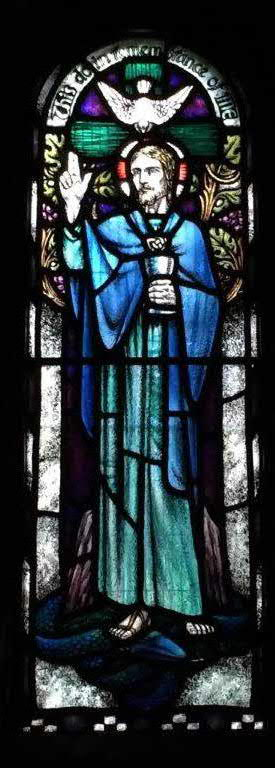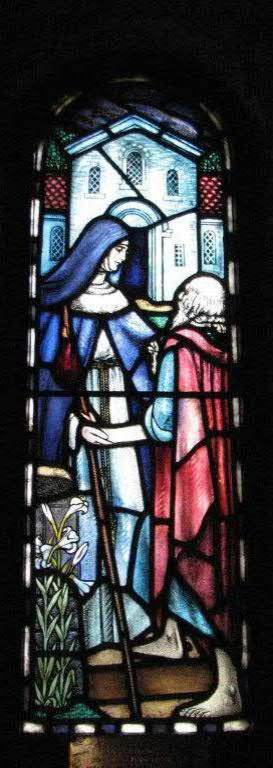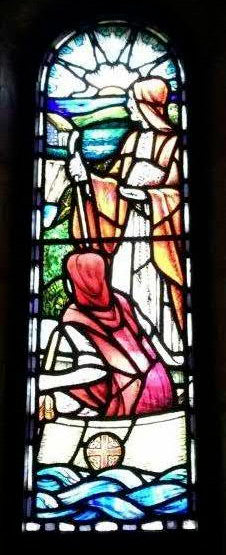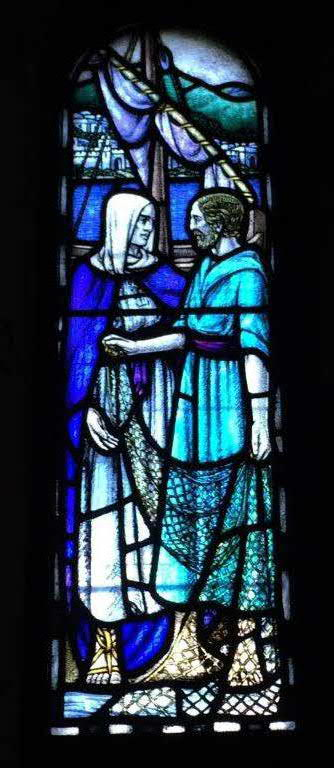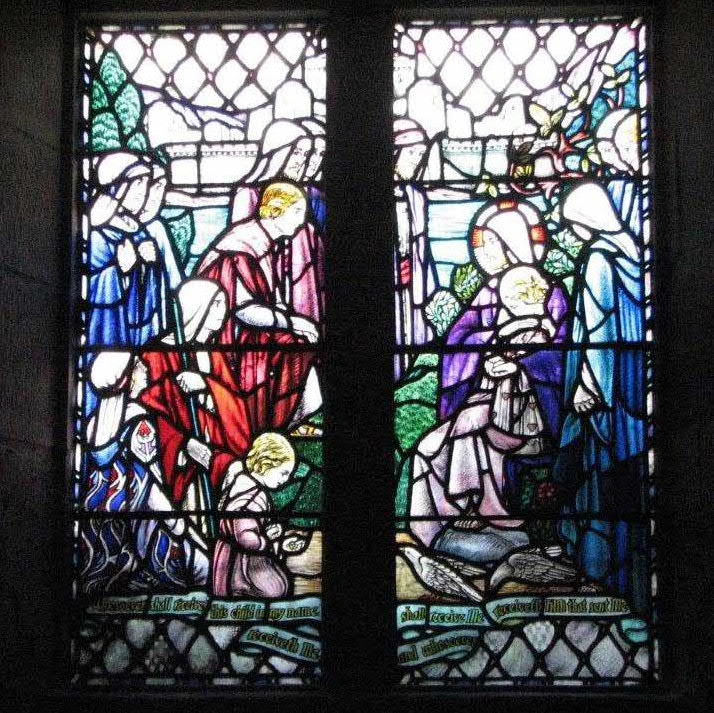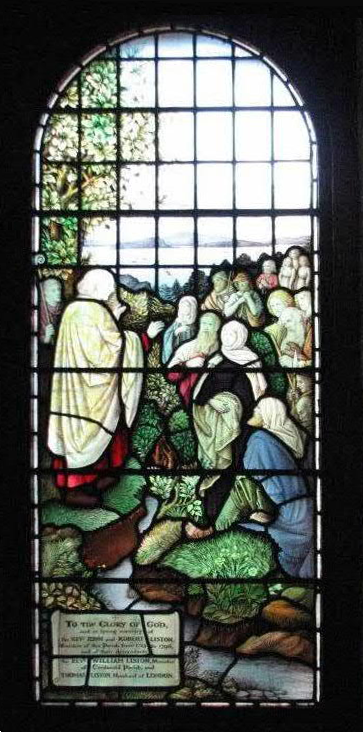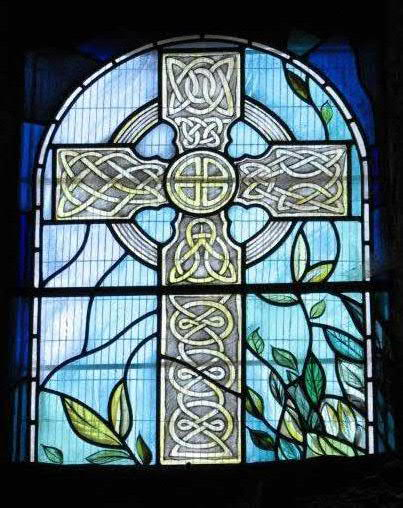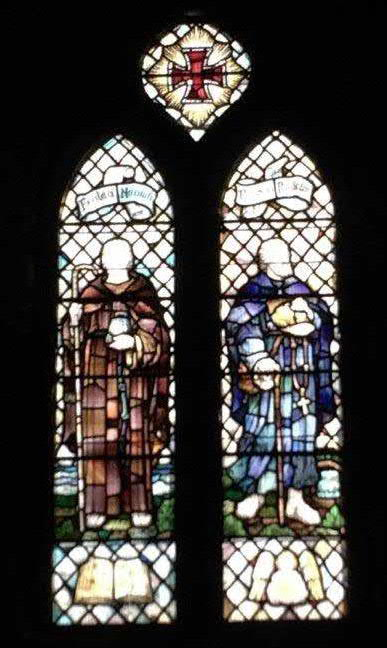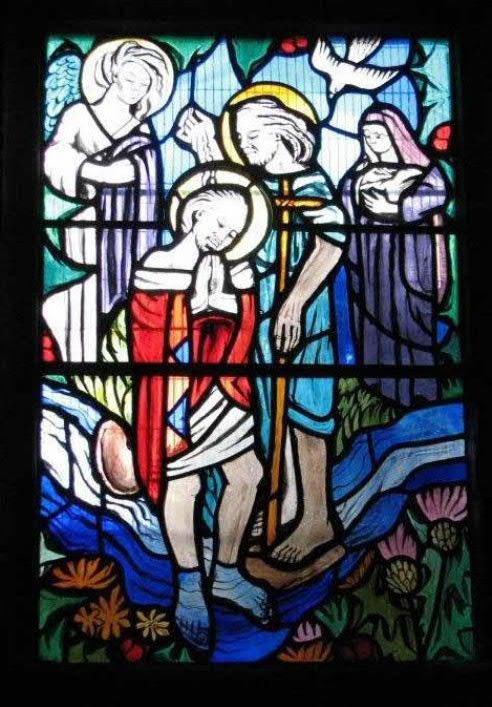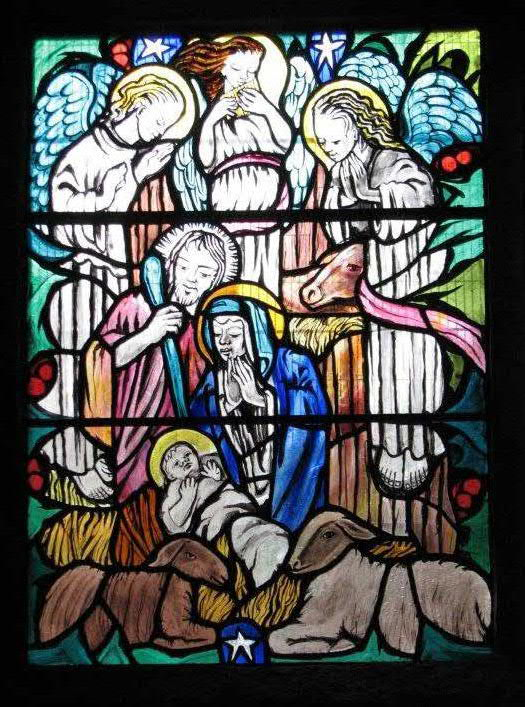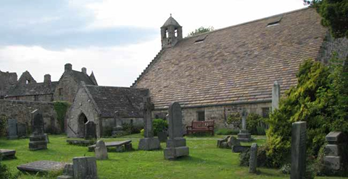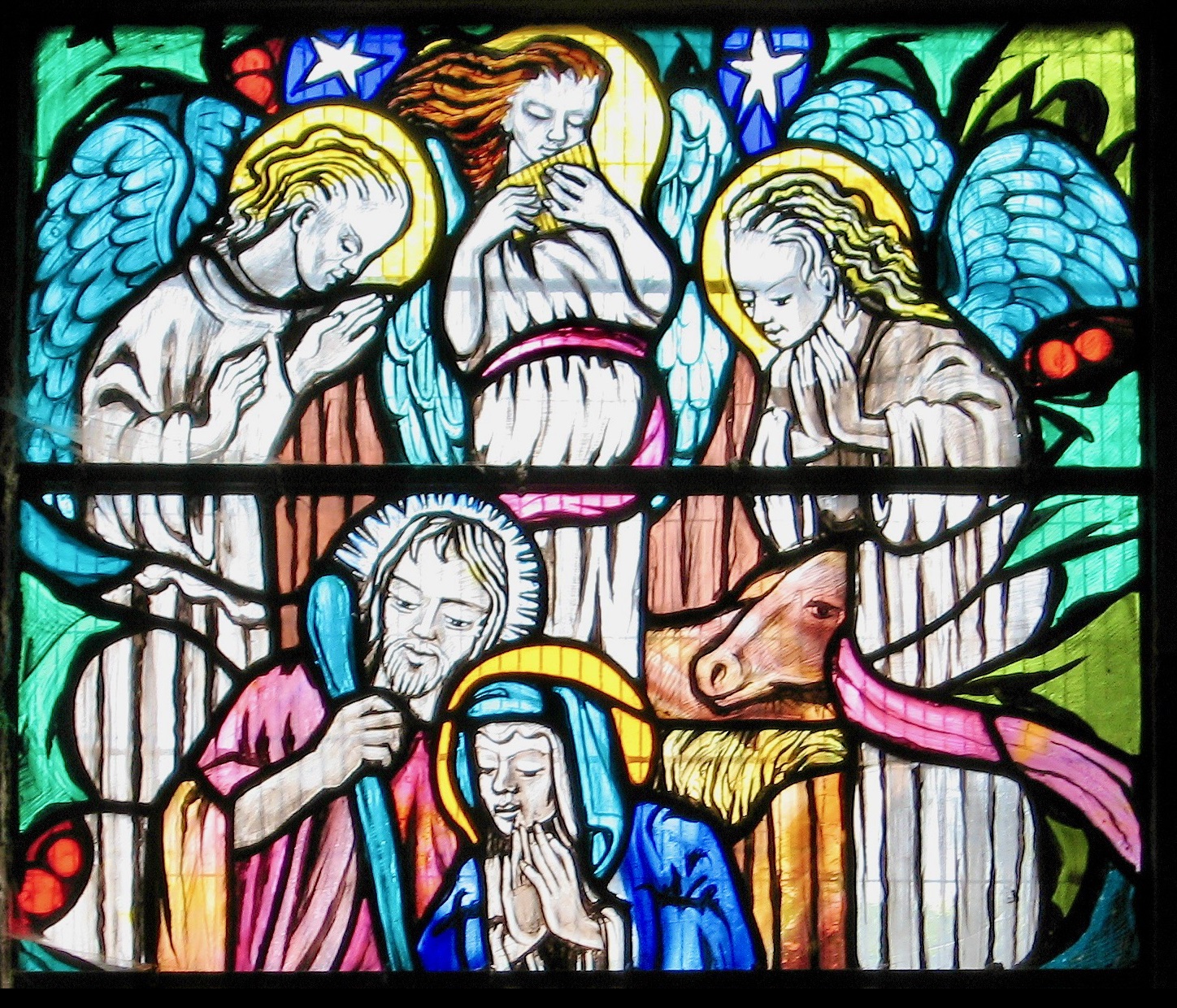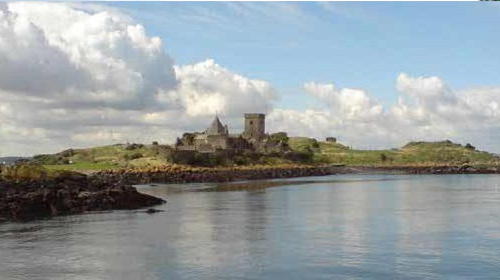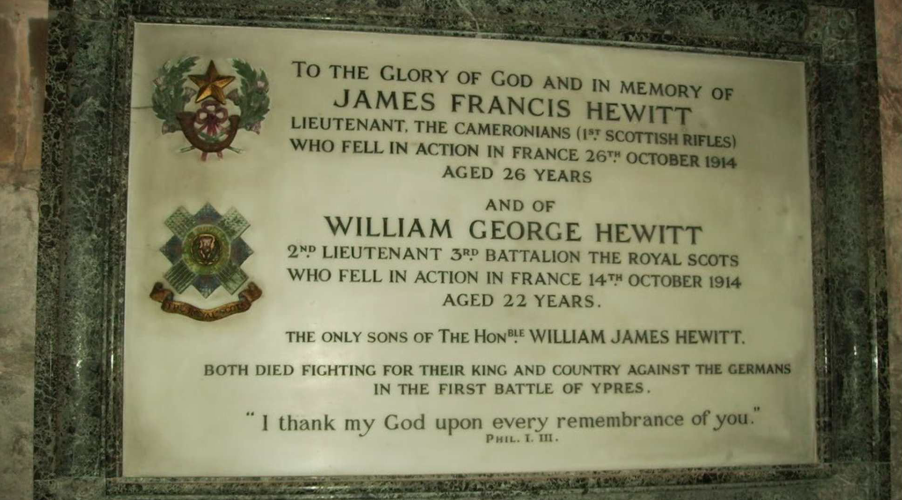The window in the north wall between the choir gallery and the organ pipes, which has been used to fill in what was once an entrance to the church.
This window is known as the ‘Liston’ window. It shows a Celtic missionary (St Fillan?) preaching to a cross section of the inhabitants of Aberdour, including men & women, young & old, rich & poor, including a priest, fisherman, farmer, shepherd & soldier.
The background is the Firth of Forth, Inchcolm and, in the distance, the Pentland Hills to the south west of Edinburgh. It is the work of an unknown London artist.
The inscription says, To the Glory of God and in loving memory of the Rev. John & Robert Liston ministers of this parish from 1723 to 1796 and their descendants the Rev. William Liston minister of Cardonald Parish and Thomas Liston, merchant, London.
Rev Robert Liston was the Moderator of the Church of Scotland in 1789, his grandson Sir Robert Liston was a Surgeon noted for his speed and skill.
See also Reflections from the Pew 44, 117 & 118.

